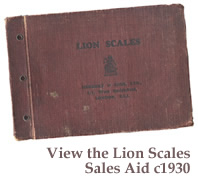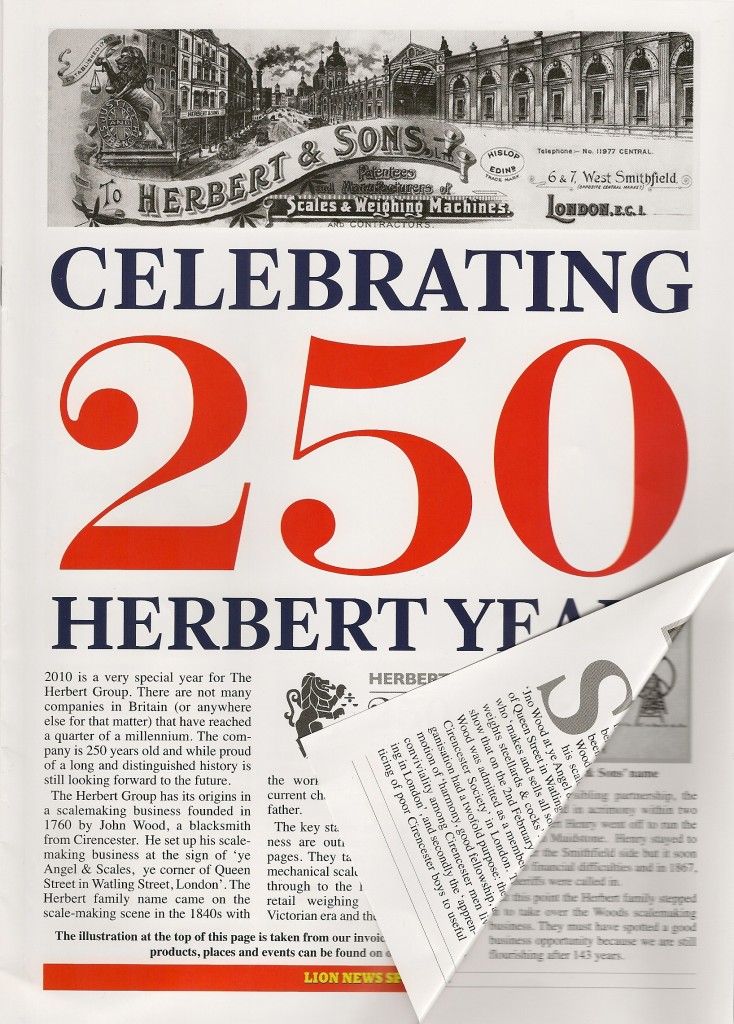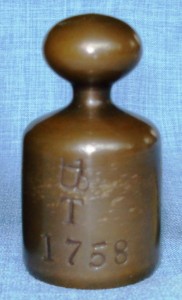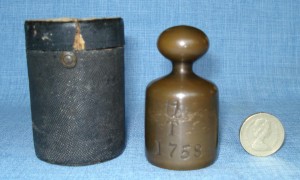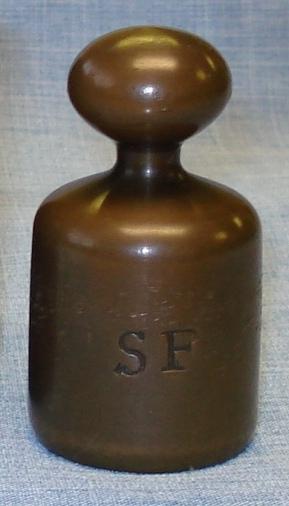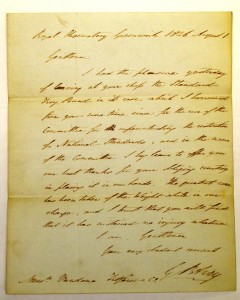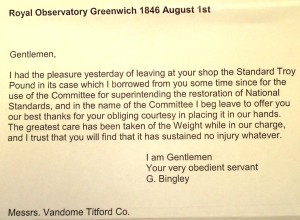Troy Pound WeightThis Troy Pound weight is one of only five such weights made in 1758 as part of the work done to establish the first legally defined Imperial standard pound. The House of Commons retained the original weight, and copies went to the Exchequer, the Mint, the Bank of England and the Mint’s scale and weight maker Samuel Freeman.
When the Imperial Troy Pound was established over 60 years later in the reforming parliamentary act of 1824, the first of these five weights was adopted as the new standard. However this ‘Parliamentary Pound’ was lost in the fire in the House of Commons in 1834.
A Commission set up in 1838 to restore the Standards appointed Professor W.H. Miller to advise them. After exhaustive tests on the four available weights, Samuel Freemans’s was chosen by Miller as the weight whose density most nearly approached the assumed density of the lost pound, and the Imperial standard was restored with confidence.
The weight in our collection is hence a hugely important link in the history of Imperial standards in the United Kingdom. It came into our possession following our purchase of Vandome & Hart Ltd in 1995, they being the successors to the original maker.
The weight is engraved on one side ‘lb T 1758’ and on the opposite side ‘SF‘, being the initials of the maker Samuel Freeman, and is probably made of gunmetal. It is 2½" high and the barrel has a diameter of 1 5/16". It is housed in a cylindrical black shagreen covered plywood box, the top of the inside lined with red silk. The top of the box lid has regrettably been lost, and the weight itself has been slightly damaged by nicks round the upper part of the body. Its shape is also unusual, with rounded shoulders rather then the common squared or drum-shaped, knobbed weights.
A peculiarity of the inscription on this weight is that the vertical stroke of the ‘5’ in ‘1758’ appears to have been omitted, so has been added later by a cut from a small chisel.
ESTABLISHMENT OF IMPERIAL STANDARDS
In about 1735, in an effort to establish a standard pound weight, the Royal Society commissioned Samuel Read, a London scalemaker, to make the first of two standard weights, based on surviving earlier official weights.
The second weight was made in 1758 as one of a group of virtually identical prototype standards under the direction of Joseph Harris, King’s Assay Master at the Mint, for a parliamentary committee chaired by Lord Carysfort. It was this weight that became the prototype for the Imperial troy pound. Harris had been assisted by Samuel Freeman III, the Mint’s scale and weight maker.
Although the parliamentary bill that was intended to follow Carysfort’s report failed, copies made by Freeman and adjusted by Harris in 1758 were distributed around the key financial institutions, namely the Exchequer, the Mint and the Bank of England. The House of Commons retained the original weight and Samuel Freeman kept another example, making 5 weights in all.
LONDON SCALEMAKERS
Our connection with this weight illustrates the interwoven nature of scalemaking in London in the 18th Century.
In 1760 Samuel Read took Charles DeGrave as an apprentice, and DeGrave went into business on his own on obtaining his freedom in 1767.
Read died in 1778, was succeeded by his widow Mary who entered into partnership with Charles De Grave in 1780. Charles De Grave II joined in partnership with John Sawgood around 1800, but this venture seems to have failed, for in 1802 Richard Wood together with two suppliers to the trade took over the debts of the business.
DeGrave later came back into the scalemaking trade, and was one of the firms that went on to become part of another scale business – Avery.
Samuel Freeman himself was the third generation of his family, all of the same name, and was Scale and Weight maker to the Mint. He traded between 1762 and 1780, when he was joined by William New. Freeman died in 1782, New was joined by his son in 1798, and he by Richard Vandome in 1805, who also became Scale and Weight maker to the Mint.
ACKNOWLEDGEMENTS
Much of the above has been extracted from ‘The Mass of the English Troy Pound in the Eighteenth Century’ by A.D.C.Simpson and R.D.Connor, published in the Annals of Science No 61 in 2004 by Taylor & Francis.
Our thanks also to Diana Crawforth-Hitchins for her knowledge, help and guidance.
|
Click on the Image(s) For Detail |
